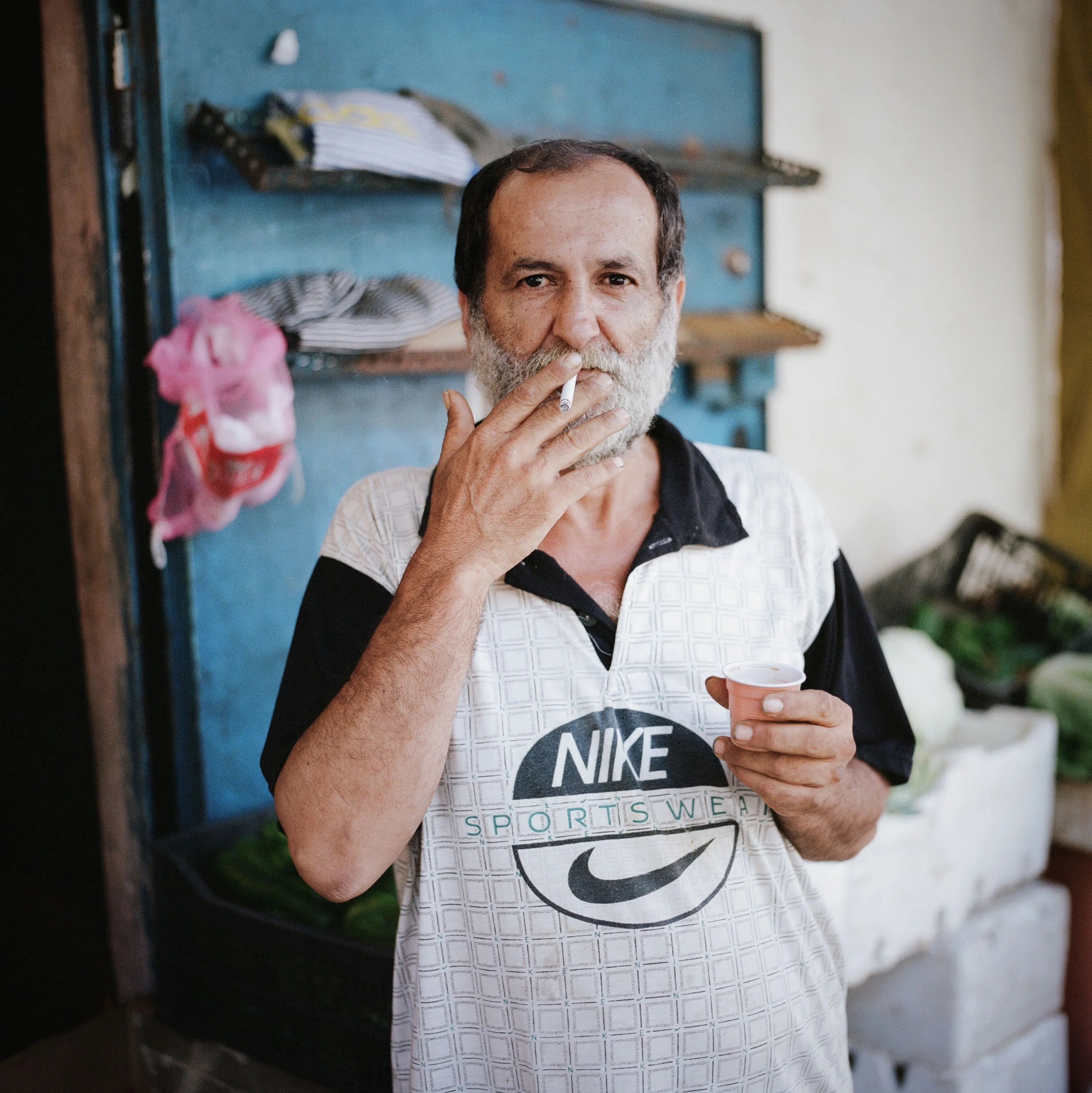Five stories | Tripoli, Lebanon
A war between neighbors began many years ago. The origins of the unrest, the disagreements, the injustices are debated by scholars, warlords, and citizens alike while the echoes of a history of violence continue in brutal clashes today.
Military check points. Mortar scars in the pavement. Children playing hide-and-seek in bombed-out stairwells.
Syria Street is the front line of a decades-long conflict between two adjacent neighborhoods in Tripoli, Lebanon. The street divides the predominantly Sunni residents of Bab-AI-Tabbanneh with the mostly Alawite residents of Jabal Mohsen who live just up the hill. Residents of Tabbanneh and Jabal Mohsen share the same resources, the same landscape, the same city, the same street. On most days they are neighbors, but on darker days, they are enemies.
Blame, insults, and allegations rain down from all sides of this struggle. These words collide and stir, reinforcing a border that is also a place where everyone in the neighborhood buys fruit. It is easy to label this conflict "sectarian," but impossible to call this assertion truth. The reality is, the cause of the violence here is tangled in centuries of imperialism and colonialism. Military intervention and resource extraction from the global north has turned neighbors into enemies, and thus, the heartbreak of war persists - entangling families and futures in its trying grasp.
When war explodes in your home, you can stay or you can flee. Some residents have the luxury of choice and some do not. No matter the stakes, some members from the community find the courage to stay and steer their community toward peace – even though it’s difficult, even though angry men hold fire in their eyes and vengeance in their hands, even though finding compassion and forgiveness feels overwhelming.
Below are five stories from brave neighbors, courageous mothers and hopeful youngsters on both sides of Syria Street – one road that connects and divides the future of Tripoli, Lebanon.
1. Zaynab
Zaynab lives near the front-line of conflict in the Jabal Mohsen neighborhood of Tripoli, Lebanon. She dreams of becoming a Bollywood actor - even though her bedroom is punctured with bullets; even though she can’t leave her house sometimes. When I met Zaynab, she was beaming with joy – she had outfits prepared for our photo shoot, looks rehearsed for the camera, and a radiant smile that could star on any big screen. She showed us her bedroom where she kept her toys, and told us not to worry because she doesn’t sleep there. We did not need to ask why. Still, in a bedroom where she cannot sleep, Zaynab dances and laughs and poses for the camera, because in her home, in her room, her dreams are infinite.
2. Moeen + ahmad
Moeen narrowly escaped violence in Aleppo and was sleeping in the streets when Ahmad Ibrahim Ali first saw him. Ahmad runs a produce stand in Jabal Mohsen. He told me, “it was unacceptable to see such a young man sleeping in the streets.” So he took Moeen in, gave Moeen a job, and set Moeen up with a safe place to sleep.
3. Kawthar
Kawthar Ahmad volunteers in a classroom off of Syria Street that teaches children on both sides of the divide. Fighters in the neighborhood lean out of buildings with blacked-out windows holding guns that serve the community. Kawthar walks past these same men in the street holding books that serve the community.
4. Tharwat
Tharwat Al Kare volunteers at a nonprofit that offers food and education to youth on both sides of the conflict. The women she works with are committed to creating a place for healing, so they built two access points to their facility: one that faces Syria Street on the Bab-Al-Tabbaneh side and one just up the hill on the Jabal Mohsen side. The building is an oasis - neutral ground in a neighborhood where getting caught on the wrong side of the street can have grave consequences.
The nonprofit is called Ruwwad which means “Pioneers,” because in the face of overwhelming odds, they show the next generation how to defy the cruelty of war. I see the future of Tripoli in Tharwat’s eyes, and in the memory of her proud smile as a wave of children flood into her kitchen, hungry, laughing, hopeful.
5. Al Shokr
Somewhere in the hills there are political skirmishes, armored vehicles and men who want to fight. Somewhere in the streets there are school children with infinite dreams, refugees starting over, teachers handing out books, food, hope. And here, standing in front of the Al-Shoker Mosque whose Arabic name translates to “thankful,” is a mother who loves her child, a powerful reminder of Mahmoud Darwish’s words “we have on this earth that which makes life worth living.”
photography & words by keenan newman

















